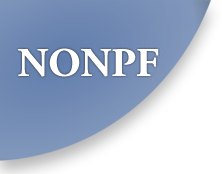Preparing Nurse Practitioners to Diagnose, Treat, and Educate about Sports Related Concussion: Are Textbooks Enough?
Saturday, April 25, 2015
Key Ballroom 11-12 (Hilton Baltimore)
Abstract:
Sports related concussions are a major public health concern for children, parents, coaches, and health care providers. In 2006, the CDC estimated that 1.6-3.8 million sports and recreational concussions occur each year (Langlois, Rutland-Brown, & Wald, 2006). Emergency department visits for kids with sports related concussion increased 92% from 2002-2011 according to a study conducted at Cincinnati Children’s Hospital (Hanson, Pomerantz, & Gittleman, 2013). In the past 10 years, medical evaluations for sports related head injuries increased by 62% (Hanson, Pomerantz, & Gittleman, 2013). Effective management of sports related concussions in the pediatric population requires timely and accurate diagnosis and management. However, most textbooks used to educate nurse practitioners offer only a small section on concussions and many do not acknowledge sports related concussion injuries specifically. Some texts continue to recommend management based on concussion "grade" which is no longer appropriate and do not specifically address cognitive rest and return to learn. One explanation for this gap could be that research related to sports related concussions is in its infancy, and many of the current recommendations for diagnosis and treatment are based on limited evidence and expert consensus opinion. Textbooks are less likely to publish recommendations that do not have a strong evidence base. One study concluded that although health providers routinely care for these patients, they may not have adequate education or training to diagnose and manage them (Zonfrillo, Master, Grady, Winston, Callahan, Arbogast, 2012). Nurse practitioners see these patients and are often required by law to be “experts” in order to clear them to go back to school and sport. Therefore, closing the gap in education by augmenting the text and providing up to date recommendations and guidelines for diagnosis and management is integral. This presentation will highlight the importance of this information in nurse practitioner education. Also, a sample content outline will be provided that includes information on appropriate diagnostic evaluation and most up to date management recommendations so that this content can easily be inserted into the current curricula.

